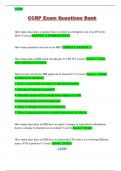Resume
Samenvatting Misbehaving
- Cours
- Établissement
- Book
Dit document bevat een volledige samenvatting van Misbehaving van Richard Thaler: In plaats van de honderden pagina's die je moet lezen zijn het hier een stuk of 60. Zelf kon ik met deze samenvatting alle vragen op het examen goed beantwoorden. Ook het schriftelijke deel heb ik mbv deze samenvattin...
[Montrer plus]













